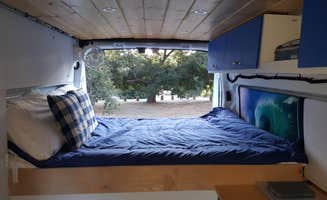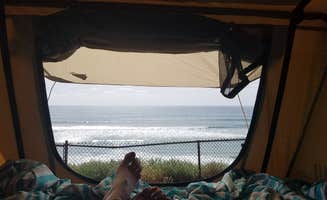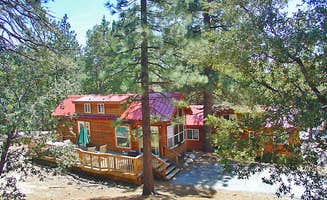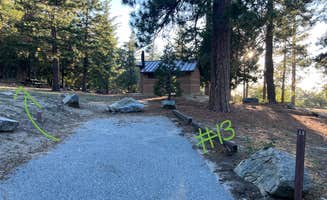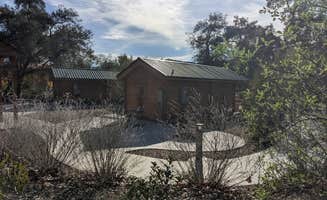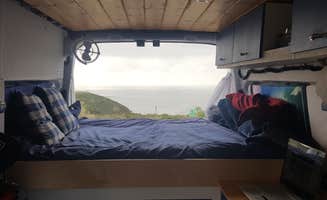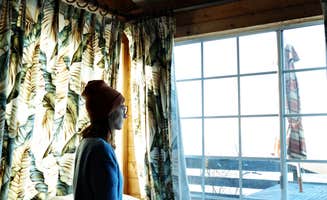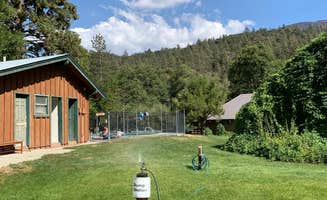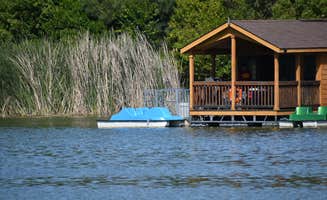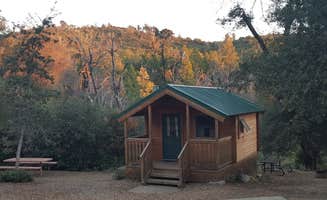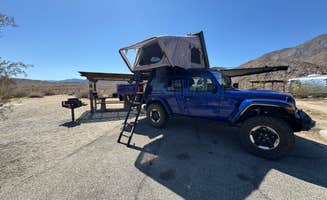Glamping experiences near Temecula, California thrive in a Mediterranean climate with hot, dry summers reaching 90°F and mild winters rarely dropping below 40°F. The region sits at elevations ranging from 1,000 to 2,000 feet above sea level, creating ideal conditions for year-round outdoor recreation. Local campgrounds operate across diverse terrain including riparian corridors, lake shores, and mountain forests within an hour's drive of wine country.
What to do
Hiking trails with elevation views: At Palomar Mountain State Park Campground, trails range from easy to strenuous with diverse landscapes. "There are several trails nearby with a great mix of easy and moderate hikes that are easily accessible and clearly marked. Palomar Observatory is only 5 miles up the road," reports Michelle C. The park's higher elevation delivers cooler temperatures even during summer months.
Fishing without a California license: Dixon Lake offers simplified fishing access with special rules. "Warning: Beware the Poison Oak. If you're hitting the trails or fishing the bank, there's a lot of it (June 2019). Also popular here is boat rental. You can rent a 'motor' boat (really a trolling motor attached) for all day rate or half day," notes Dad & B R. The lake requires only a $7 permit per adult rather than state licensing.
Stargazing in dark sky zones: Observatory proximity creates excellent night viewing conditions. "Great campsite for stargazing. We stayed in campsite 22, which required to walk up a hill to get to, but was actually very nice because you get sort of a cliff to look over," shares lordIrm about Palomar Mountain. Clear mountain air and distance from urban light pollution create optimal viewing conditions year-round.
What campers like
Seasonal water features: At Lake Skinner Recreation Area, water activities change with rainfall patterns. "They have a super nice splash pad park that's no additional cost! There are lots of walking trails. We happened to be there during the poppy super bloom and the butterfly migration so that was also really cool!" writes Jennifer D. The splash pad operates during summer months as an alternative to lake swimming.
Uncrowded weekday camping: Fry Creek Campground offers peaceful weekday stays with minimal competition for sites. "Stayed Tuesday-Thursday and we were the only campers in the entire campground," notes Sophia K. This campground operates from April through December, with early spring and late fall offering the most solitude.
Wildlife viewing opportunities: Campgrounds feature diverse bird and animal species. "The birds are loud, but if you don't care about that they're very fun to watch! The largest critter we saw was a wild turkey," describes Matty F. at Palomar Mountain State Park. Morning and evening hours provide optimal wildlife viewing, particularly in wooded camping areas away from main roads.
What you should know
Site selection factors: At Ronald W. Caspers Wilderness Park, campsites vary significantly in privacy and features. "The sites are really cool and private, lots of tall trees and shade. Only downside was the bugs. There were a lot of flies, but we went in July so go figure," explains Lindsey W. Elevation differences between sites affect temperature, insect activity, and privacy levels.
Extra fees and regulations: Many campgrounds charge supplemental costs beyond site fees. "I loved this campground but wasn't a fan of the extra fees. The charge $10 per person per day to fish in their Lake. And you can't swim or let the kids play in the lake because it's a reservoir," mentions Jennifer D. about Lake Skinner. Vehicle fees may apply for disconnected towing vehicles or day visitors.
Cell service limitations: Reception varies dramatically across the region. "No reception unless you drive closer to the general store at the base of campground (~10 min away)," reports Matty F. about Palomar Mountain. Most mountainous camping areas have minimal to no coverage, while campgrounds closer to Temecula maintain better connectivity.
Tips for camping with families
Splash pad alternatives: When seeking glamping close to Temecula, California, water features become essential during hot months. Launch Pointe Recreation Destination and RV Park offers family-centered water amenities. "Great campground for families. Lots of activities for the kids to do, like smores by the fire, art, splash pad, and play ground. Facility was clean," shares Jeff E. The splash pad operates during summer months when temperatures frequently exceed 90°F.
Biking-friendly options: Some campgrounds feature terrain suitable for young cyclists. "It's family friendly, great flat biking for kids, large dirt area used for parking during the Balloon and Wine festival that kids can play on and ride bikes in," notes Erin & Travis M. about Lake Skinner. Bringing bikes allows families to explore campground roads and designated paths without long hikes.
Educational nature programs: Seasonal ranger activities enhance family experiences. "On Saturdays there's a nature walk," mentions Berton M. about Caspers Wilderness Park. These programs typically run 60-90 minutes and offer children hands-on learning about local ecosystems, wildlife identification, and conservation principles.
Tips from RVers
Electrical considerations: Thousand Trails Wilderness Lakes RV Resort requires planning for power needs. "They don't have enough 50amp sites and not all of them are always working. This park is first come / first served and they don't prohibit a 30amp rig from taking a 50amp site, so you can see the problem," explains david N. RVers should arrive early for better site selection, particularly during peak season weekends.
Leveling challenges: Many sites require significant adjustments for comfort. "The sites were all uneven. Every camper we saw had to do major leveling efforts," notes Brian C. about Launch Pointe. Bringing extra leveling blocks, particularly for larger rigs, helps address terrain variations common throughout the region.
Seasonal flooding concerns: Wet weather impacts campground conditions dramatically. "It didn't help that it rained a lot and the streets turned into lakes - so not only did you have geese on your roof but also right outside your door," explains Tina M. about Wilderness Lakes. Winter camping from December through March carries the highest likelihood of precipitation affecting site conditions and access roads.



